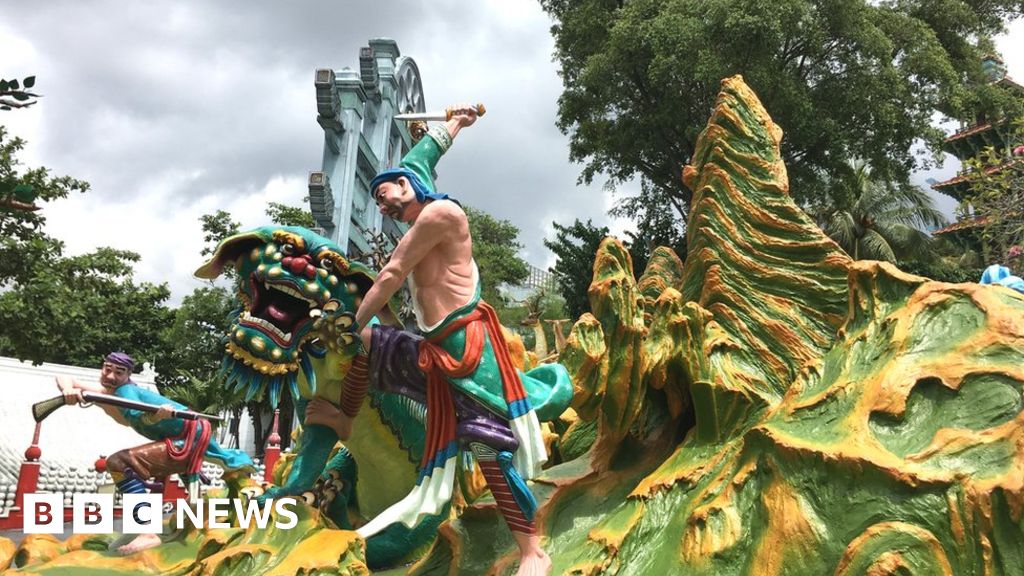Zoroastrianism is still an active religion today, albeit a minor one. According to Wikipedia, “North America is thought to be home to 18,000–25,000 Zoroastrians of both South Asian and Iranian background.” I had known that, but I was surprised to learn just this July about the Mandaeans of Iraq and Iran who have an active religion. Astronomers have named a newly-discovered dark region on Pluto Krun, after the Mandaean lord of the underworld. Krun manifests himself as a giant louse, so he’s fair game for an anthropomorphic story, if anyone wants to include a divine anthropomorphic giant louse in their story. Other Mandaean gods are Hagh, a giant scorpion; Gaf; a giant lion; Sargi, a giant hornet; and Ur, a giant snake/serpent.
According to the scientists or historians who trace the origins of folk tales, the story of Aladdin and his magic lamp began as an early Islamic folk tale, maybe a specific children’s tale created by a now-anonymous Islamic religious teacher, about an Islamic Chinese or Uyghur boy named Allah-ud-din. The Evil Magician was specifically a Zoroastrian priest; Zoroastrianism being a major rival religion to Islam at the time.


 ) coming up with my own fantasy world, which included its own pantheon. At first I just chose gods at random from earthly mythologies (that seemed to work for R. E. Howard), but it didn’t seem believable. “Hey,” I said to myself at last, “you took linguistics and the history of language in college – you know how words change over centuries. And this is supposed to take place during the last Ice Age – come up with names that might have evolved into ones known millennia later! Make an authentic-sounding pantheon!” So I made notes on this “lost” mythos (supposedly written by a college professor who knows this stuff somehow), such as this about Tira-K’hessst, the Dragon Goddess:
) coming up with my own fantasy world, which included its own pantheon. At first I just chose gods at random from earthly mythologies (that seemed to work for R. E. Howard), but it didn’t seem believable. “Hey,” I said to myself at last, “you took linguistics and the history of language in college – you know how words change over centuries. And this is supposed to take place during the last Ice Age – come up with names that might have evolved into ones known millennia later! Make an authentic-sounding pantheon!” So I made notes on this “lost” mythos (supposedly written by a college professor who knows this stuff somehow), such as this about Tira-K’hessst, the Dragon Goddess: